Around May 15, 2022, depending on whether you doomscroll the New York Times or the Center for Disease Control, the United States reached one million COVID deaths.
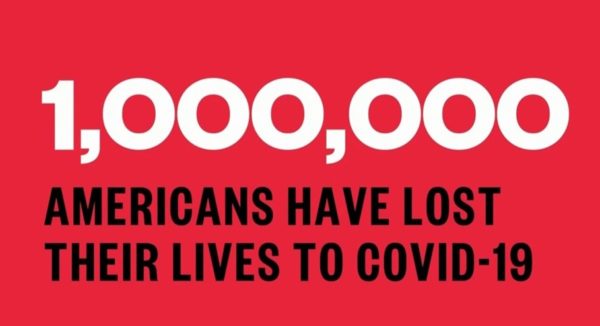
Nadine Burke Harris, California’s former surgeon general, declared in a May 17 Al Jazeera story that the pandemic is “probably the greatest collective trauma of our generation.”
The New York Times observed that these deaths do not include the estimated nine million more family members, loved ones, close friends, and neighbors who are part of the extended personal networks around COVID deaths.
During the last 2 1/2 pandemic years, denial and repression of trauma have surrounded these 10 million Americans impacted by COVID deaths. Now, wistful invocations of a return to normal waft in and out of everyday conversations and politicians’ speeches.
Death = Silence
These silences wrapped around COVID’s epic global story have been normalized. They suppress the uneven metamorphosis of the pandemic around the world.
Decades ago, the AIDS movement printed SILENCE = DEATH on posters and pins. Now, in COVID times that call to action has flipped to inaction, where DEATH = SILENCE.
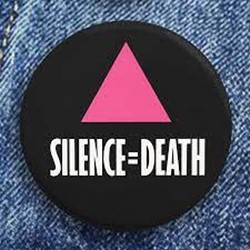
These silences sanitize the underfunded U.S. public and private health care systems and deepening inequalities. They sterilize the ways in which COVID has minced up our psyches.
The staggering U.S. official death toll exceeds that of any other country. One of the richest and most powerful nations in the world, with one of the most massive military industrial complexes, houses one of the most broken health care systems.
COVID ripped open decades of racial and ethnic health care disparities. The elderly, poor, African Americans, Latinx, and Native Americans were hit the hardest. Those over 65 represent almost three quarters of COVID deaths, an almost incomprehensible 740,000.
A Small Story of a COVID Outbreak
Yet, this 10 million does not count people like my mother, Alice Rodden Zimmermann, who contracted COVID in November 2020 in Oak Hill Nursing Home in Ithaca New York. At 96, it ravaged her for seven weeks.
Afterwards, finally vaccinated, she endured the jagged ambiguities of undiagnosed, unspoken symptoms of long COVID for months.
In June 2021, my mother died, unable to swallow. She did not know whether she inhabited the real world of the hospital or the splintered hallucinations of family long dead in Chicago where she had lived for 67 years. Her death certificate does not state COVID as cause of death. It says heart failure and dementia.
In his May 13 speech, Biden observed “Today we mark a tragic milestone: one million lives lost to COVID 19. One million empty chairs around the dinner table.” This familialist invocation camouflages a new reality: COVID cleaves the borders between the private and the public, no matter how hard some hold on to the fictions of their separation.
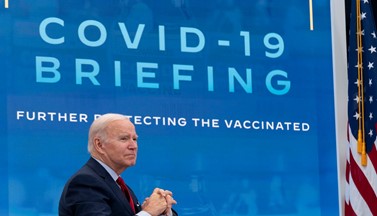
This staggering number of one million deaths was met with almost total silence and almost no recognition outside of a short speech by President Biden and his call for a day of flags at half mast.
The Caregiving Underground
The nursing underground and some palliative care doctors covertly collected stories from families of patients like my mother, concerned they were attending to so many elderly patients who had so-called “recovered” from COVID months before. They shared sotto voce that they wanted a larger narrative beyond the patient in the bed on IVs so they could provide better care for the sick and dying, a way to thread each death to other deaths yet to come.
These persistent silences are not only national and public, but also personal and private, all entwining into each other.
When my mother contracted COVID, nursing homes in New York state prohibited family visits unless the patient was end of life.
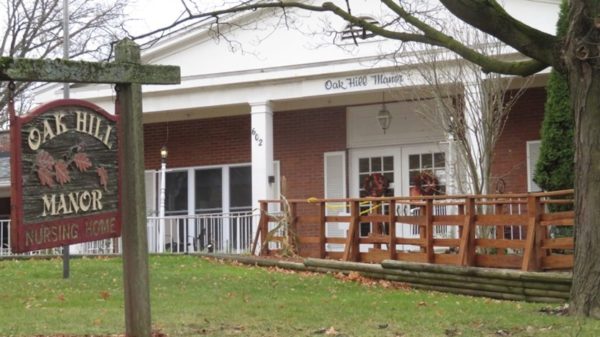
Shrouded in masks, face shields, eye guards, surgical gloves, the generous certified nursing assistants working in the worst of pandemic crisis booked Zoom calls so I could see my mother.
Shards of sentences drifted through this virtual space like some minimalist poem, my mother unable to communicate to a screen.
Silences and Signs
My mother was lifelong hearing impaired, classified as legally deaf by the Americans with Disabilities Act. She augmented her nanotechnology hearing aids with lip reading and facial expressions. People with disabilities constitute some of the pandemic invisibles.
Masks amputated human contact from my mother. Immobility, dementia, and cognitive and psychiatric issues shrunk her world. Masks shrouded nuanced understanding.
In the chaotic swirls of travel nurses due to short staffing, the nursing home accidentally lost her hearing aids.
Imprisoned in silence, my mother lived without voices and sound for four months. Single words where she struggled to express her COVID experience drifted like fallen leaves floating away in a small creek.
Some friends texted daily to check in on my mother’s symptoms.
One colleague shipped me lavender bath salts. Others mailed cards saying they were with me in this unimaginable horror of disconnection, illness, health care trauma. A few sent flowers.
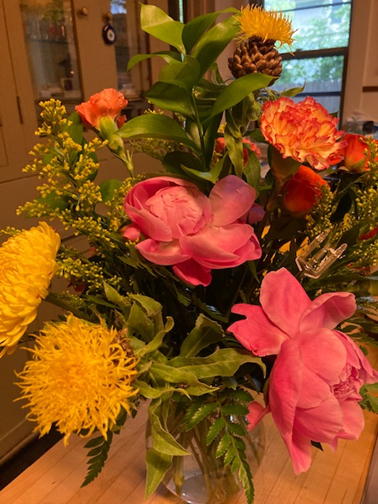
On various days across the month of December, my close friends Carla, Zillah, Shaianne, and my partner Stewart stood with me in front of the nursing home in the cold. We held handmade signs that said “Thank You Oak Hill Staff” to thank the health care workers.
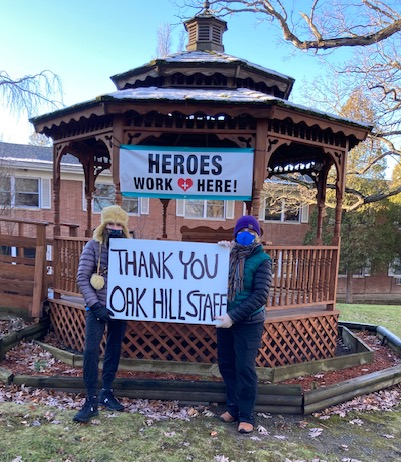
During this November/December outbreak, 25% of the residents in my mother’s nursing home died. Every single worker contracted COVID, just weeks before vaccines were approved.
But silences also encircled me, like watching a film on a streamer when the sound malfunctions. Some relatives who profess loyalist commitment to the familial ignored me completely.
Their silence, I suspect, was displacement, a scheme to hide from COVID’s ravages on victims and their families, a daydream of control and amnesia. I wondered if they imagined that if they did not speak to me about my mother or COVID, they would be spared, like anticipating a storm on your weather app but then feeling relief because it swerved north to Lake Ontario.
Blackouts and Anesthesia
When my mother died in June 2021, these silences solidified like an electricity blackout during a summer thunderstorm. Not one of these family members mailed a condolence card. But friends wrapped cards, flowers, calls, texts, and walks around my loss.
This invisibility of public mourning exposes a collective anesthesia that COVID has changed how we live. It blocks out disease, pandemic, and any recognition that the “before time” may never return.
As Harvard medical historian Allan Brandt noted in a May 17 National Public Radio story, “It’s been a seismic event in the history of the world. It’s been a catastrophic event in the history of the United States.”
This death toll of one million is more than the 750,000 Americans who died in the Civil War.
It exceeds those dead from HIV in the last 40 years.
It surpasses the death toll of Americans killed in World War I, World War II, Vietnam, and other U.S. wars of the 20th and 21st century combined.

Yet those other epidemic and war-time deaths garnered more public presence than these COVID death exiled in silence and denial.
Writing in The Conversation, historian Gary Laderman analyzed the lack of public rites of mourning during COVID. He observed “there have been minimal efforts to help make sense of the deaths on a national level.”
Home Made, People-Powered, Participatory
But beyond the illusions of nation-states and the denials of those partisans of privatized familialism, grassroots people-powered movements to speak COVID and its losses continue the formidable legacies of feminist, civil rights, and AIDS political movements.
They hold public spaces for stories, for grief to find its place, for public health to be repaired. They mobilize any available and accessible technology: websites, Facebook, Twitter, pop-up memorials, social practice art, online projects, demonstrations, homemade yellow hearts.
After her father died of COVID in Arizona, Kristen Urquiza founded Marked By Covid, a grassroots nonprofit to promote justice and accountability for COVID. Their website features the Honest Obituary section, where victims’ families commemorate their loved ones but also speak of the larger political public health inadequacies that contributed to their death. They name politicians who refuse public health policies.
COVID Survivors for Change advocates for stronger, more rapid pandemic public health responses. Its website hosts a user-generated “Survivor Stories” section where people can share their caregiving experiences, their jobs as nurses or EMTs or doctors, and stories of those who died.
The Yellow Heart Memorial disseminates the icon of the yellow heart, a symbol of COVID loss drawing on the folk tradition of tying yellow ribbons around trees to commemorate those at war.
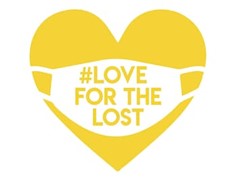
These COVID yellow hearts are homemade, hand-drawn, digitally printed, scanned, sold by crafters on Esty.
Citizen-devised pop-up yellow heart memorials have been organized in Arnold, Missouri; Tampa, Florida; Queen’s College in New York City; Highland Park, Illinois; Irving, Texas; Crossroad, Indiana; Dover, Delaware; and more.
From September 17 to October 3, 2021, social practice artist Suzanne Brennan Firstenberg mounted 660,000 white flags to commemorate the COVID dead on the National Mall in Washington, D.C., for a project entitled “In America: Remember.” People wrote personalized messages or names on the flags with black Sharpies. “So many of these deaths happened in isolation without acknowledgement,” she explains.
Wakes and Sláinte
My brother and nieces, my ex-sister-in-law, and my partner, son, and me organized a traditional Irish/Scottish wake on Zoom twelve hours after my mother died.
A spontaneous convening, we wore black, drank pinot noir, and told stories about my mother from our homes in Houston, Chicago, and Ithaca.
We toasted each story with a group sláinte, the traditional Gaelic toast that translates as health.
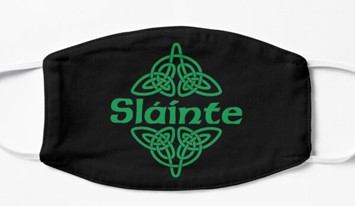
Our homespun Zoom secular ritual conjured this thought: community and speaking COVID openly animate public health in micro forms.
These small acts of honest obituaries, cocreation art practices, and impromptu wakes crush amnesia, anesthesia, and silence. They push us to think well beyond 10 million affected.
They fortify us for the turbulent worldwide pandemic seas and polarized politics ahead.
Patricia R. Zimmermann is the Charles A. Dana Professor of Screen Studies and Director of the Finger Lakes Environmental Film Festival at Ithaca College in Ithaca New York. The author or editor of ten books, her most recent are “Documentary Across Platforms: Reverse Engineering Media, Place, and Politics” (Indiana 2019) and “Flash Flaherty: Tales from a Film Seminar” (Indiana, 2021).

